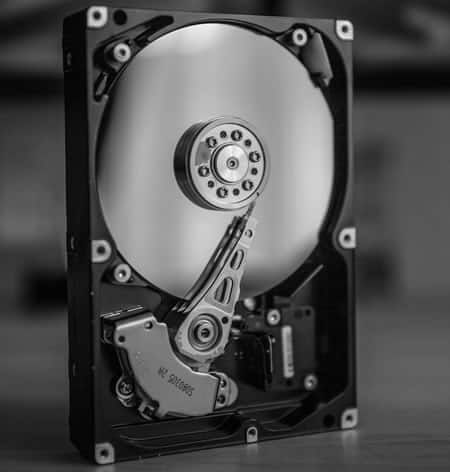The Ultimate Guide to File Recovery: How to Retrieve Lost Data in 5 Simple Steps
Our lives revolve around data. From precious family photos to important work documents, losing valuable files can be an absolute tragedy. But fear not! With “The Ultimate Guide to File Recovery: How to Retrieve Lost Data in 5 Simple Steps,” you’ll be equipped with the knowledge and tools to recover your lost files effortlessly. This comprehensive guide takes you on a journey through the world of data recovery, demystifying the process and providing you with actionable steps to retrieve your data. Whether you accidentally deleted a crucial file, experienced a hard drive failure, or fell victim to a malware attack, this guide has got you covered. So, get ready to dive into the world of file recovery and regain control over your valuable data. Don’t let a lost file ruin your day – let this guide be your lifeline to file recovery success!

Common Causes of Data Loss
Data loss can occur due to various reasons, and it’s crucial to understand the common causes to prevent future mishaps. One of the primary causes is accidental deletion. We’ve all been there – mistakenly clicking the delete button and realizing too late that the file was important. Another common cause is hardware failure. Hard drives can fail unexpectedly, leading to the loss of all data stored on them. Power outages and surges can also damage hardware and result in data loss. Additionally, viruses and malware can corrupt files or even delete them altogether. It’s essential to stay vigilant and protect your devices from malicious attacks. Lastly, human error, such as formatting the wrong drive or improperly handling storage devices, can also lead to data loss. Understanding these causes can help you take necessary precautions to prevent future data loss.
Precautions to Prevent Data Loss
While it’s impossible to guarantee 100% protection against data loss, there are several precautions you can take to minimize the risk. The first and most crucial step is to regularly back up your files. This can be done using external hard drives, cloud storage services, or even network-attached storage (NAS) devices. By creating multiple copies of your data, you ensure that even if one copy is lost, you can still retrieve it from another location. It’s also important to keep your operating system and software up to date. Manufacturers often release updates that address security vulnerabilities, reducing the risk of malware infecting your system. Additionally, investing in reliable antivirus software and regularly scanning your devices for malware can help prevent data loss. Lastly, it’s essential to handle storage devices with care. Avoid dropping or mishandling them, as physical damage can result in permanent data loss.
Step 1: Assess the Situation and Identify the Type of Data Loss
When you realize that you’ve lost a file, it’s crucial to stay calm and assess the situation. Understanding the type of data loss you’re dealing with will help you determine the appropriate course of action. Start by asking yourself how the data was lost. Did you accidentally delete it? Did your device experience a failure? Was it due to a malware attack? Once you’ve identified the cause, determine the extent of the loss. Is it a single file or an entire folder? This information will guide your file recovery process and ensure that you’re taking the right steps to retrieve your data.
Step 2: Stop Using the Affected Device or Storage Medium
When data is lost, it’s important not to use the affected device or storage medium until you’ve successfully recovered your files. Continuing to use the device increases the risk of overwriting the lost data, making it much harder to retrieve. If it’s a hard drive failure, immediately power down the device and disconnect it. For accidental deletions, refrain from saving any new files or installing software on the affected device. By halting all activity on the device, you increase your chances of successful file recovery.
Step 3: Determine the Appropriate File Recovery Method
Once you’ve assessed the situation and stopped using the affected device, it’s time to determine the most suitable file recovery method for your specific scenario. The method will depend on the type of data loss you’ve experienced. For accidental deletions, you can often retrieve the files from your computer’s recycle bin or trash folder. If the files are not there, you may need to use specialized file recovery software. In the case of hardware failures, such as a malfunctioning hard drive, you might need to consult professional data recovery services. For malware attacks, it’s important to remove the malicious software first before attempting to recover the files. Understanding the appropriate file recovery method will save you time and effort in the long run.
Step 4: Use File Recovery Software or Tools
In many cases, file recovery software or tools can help you retrieve lost data. These programs are specifically designed to scan storage devices and locate deleted or damaged files. There are both free and paid options available, each offering different features and levels of effectiveness. Some popular file recovery software include Recuva, EaseUS Data Recovery Wizard, and Stellar Data Recovery. Before using any software, it’s important to read reviews, ensure compatibility with your operating system, and follow the instructions carefully. By using the right file recovery software, you increase your chances of successfully retrieving your lost files.
Step 5: Safely Store the Recovered Files and Prevent Future Data Loss
Once you’ve successfully recovered your lost files, it’s crucial to store them safely to prevent any further data loss. Create multiple copies of the recovered files and store them in different locations. This can be on external hard drives, cloud storage services, or even offline storage mediums like DVDs or USB flash drives. Regularly back up your data to ensure that you always have a recent copy available. Additionally, consider implementing data protection measures such as encryption and password protection to safeguard your files from unauthorized access. By taking these precautions, you minimize the risk of future data loss and ensure that your files remain secure.
Additional Tips for Successful File Recovery
Here are some additional tips to enhance your chances of successful file recovery:
1. Act quickly: The longer you wait to recover your lost files, the higher the chance of them being overwritten or permanently deleted. As soon as you realize the data loss, take immediate action.
2. Seek professional help when needed: If you’re dealing with a severe hardware failure or complex data loss scenario, don’t hesitate to consult professional data recovery services. They have the expertise and specialized equipment to retrieve data from even the most challenging situations.
3. Verify recovered files: After using file recovery software, it’s important to verify the integrity of the recovered files. Open them and ensure they are intact and accessible. If any files are still corrupted or unusable, you may need to explore alternative recovery methods or consult professionals.
4. Learn from the experience: Data loss can be a valuable learning experience. Reflect on the cause of the loss and take measures to prevent similar incidents in the future. Regularly reviewing your data backup strategies and staying vigilant against potential threats will help you avoid future data loss.
Losing valuable files can be a stressful and frustrating experience. However, with the right knowledge and tools, you can recover your lost data in a few simple steps. By following this ultimate guide to file recovery, you’ll be equipped to handle various data loss scenarios, whether it’s accidental deletion, hardware failure, or malware attacks. Remember to assess the situation, stop using the affected device, determine the appropriate file recovery method, use reliable file recovery software, and store the recovered files safely. Implementing precautions to prevent future data loss and seeking professional help when needed will further enhance your file recovery success. With this comprehensive guide as your lifeline, you can regain control over your valuable data and never have to worry about lost files again. Don’t let a lost file ruin your day – take action and retrieve your data with confidence!



